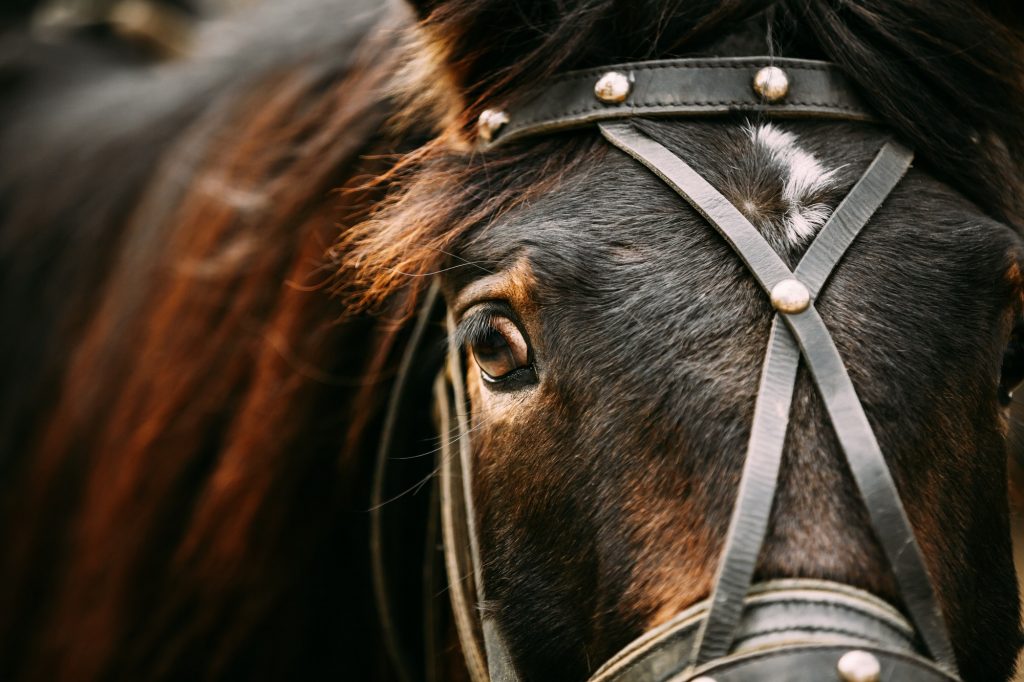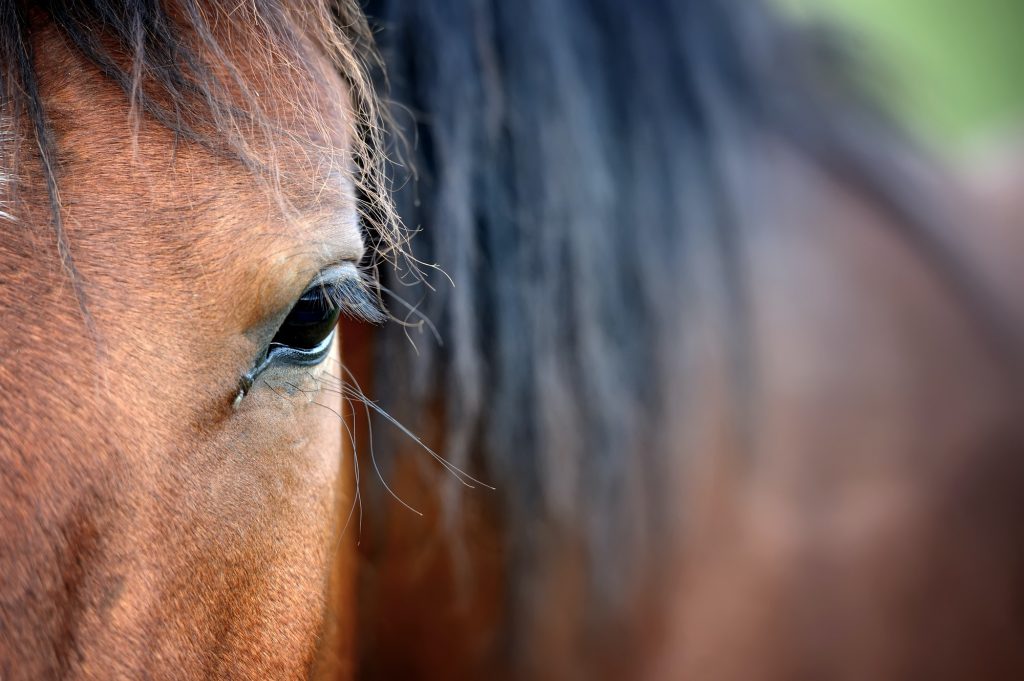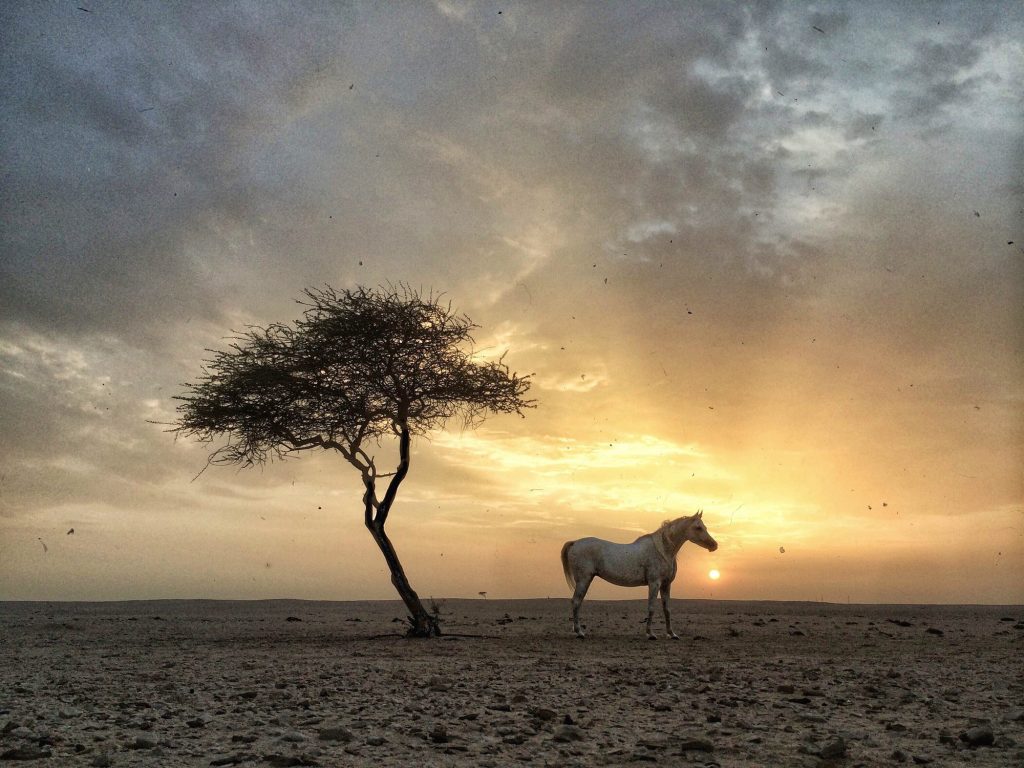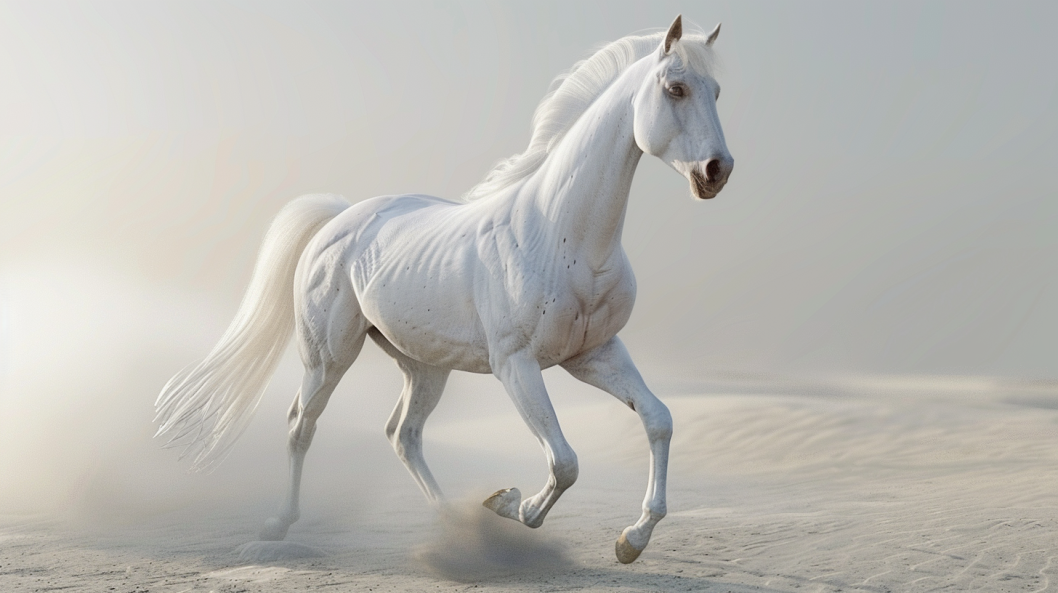The Arabian horse is known for its elegance and stamina. It is one of the best choices whether you want an intelligent and trainable horse for racing or just for a joy ride and mounting activities. Arabians are compact with a distinctive head shape, arched neck, and high tail carriage. However, like any majestic creature, understanding their unique temperament and care requirements is crucial. It’s important to look beyond their beauty and grace and learn beforehand about their needs and potential drawbacks.
I had the privilege of volunteering for a summer at a ranch specializing in Arabian horses. One particular horse stood out to me— a stunning bay Arabian named Amir. He had a sleek coat and a proud, upright stance that seemed to embody the breed’s elegance and strength. What struck me most about Amir and the Arabian breed was their intelligence and affectionate nature. They were gentle and formed strong bonds with their handlers. Understanding their care needs, including the cost of feeding them properly, became evident as I witnessed firsthand the dedication required to maintain their health and vitality.
Arabian horses are governed by specific breed standards that emphasize their distinctive traits. According to Arabian Horse Association (AHA) guidelines, Arabian horses must possess a refined head with a broad forehead, large eyes, and small ears set close together. They should also exhibit a high tail carriage and a well-arched neck that blends smoothly into a deep, sloping shoulder. Adherence to these laws preserves the breed’s genetic purity and honors its legacy as one of the oldest and most cherished horse breeds worldwide.
In this article, we will discuss what makes Arabian horses great and unique and the origin of Purebreds. We will also uncover the common health issues in Arabian horses and some ways to prevent them. But first, let’s look at Arabian horses’ distinguishable features and characteristics.
A Quick Breed Overview
Arabian horses, the oldest pure breed in the world, praised for their beauty, elegance, and spirit, are among the most distinct horses in the world. Their unique dished head, protruding eyes, compact body, and high-set tail make them easy to recognize in a crowd of horses. They have angled shoulders, good bone density, and strong hoof walls.
Arabians typically weigh 800 to 1,000 pounds, with an average height ranging from 14 hands (56 inches) to 16 (64 inches). Although small compared to other riding horse breeds, Arabians are the living embodiment of small but incredible. They have 17 ribs instead of 18 due to a short back, but they have flexible nostrils that allow them to use oxygen more efficiently and maximize lung capacity. Here’s a little recap about the Arabian horse breed:
WEIGHT: 800 to 1,000 pounds
HEIGHT: 14 hands (56 inches) to 16 hands (64 inches)
APPEARANCE: High-set tail; compact body; small, wedge-shaped head; long, arched neck
SUITABLE FOR: Experienced owners, trainers, and riders
LIFE EXPECTANCY: 30 years

Arabian Horse Characteristics
Whether you’re looking to buy an Arabian Horse or you’re just an admirer of these great horses, here is some information about the Arabian Horse breed that you should know:
Arabian Horse Features
• They stand between 14-15 hands and are medium to small in size
• Weigh from 850 to 1,100 pounds
• Great endurance
• Beautiful head that is broad at the forehead, then tapers towards the nose
• Short alert ears
• Large eyes that are set wide apart
• Deep and wide jaw
• Long and graceful neck
• High and well-set tail
• Athletic legs
Interesting fact: The Arabian also possesses an anatomical difference compared to other breeds. They have one less lumbar (back) vertebra and one or two fewer vertebrae in their tails.

The Origin of Arabian Horses
Although the exact origin of Purebred Arabians is unknown, experts believe that they were bred and raised in the desert lands of Saudi Arabia by the Bedouin tribes, who have a shared history with these horses back in 3,000 BC. Bedouin had strict breeding practices back then, which helped to keep the bloodlines pure. They value Arabian horses so much that some owners even brought them into their families’ tents at night to provide them warmth and protection.
Due to war and trade, the Arabian horse eventually spread to Europe. Many influential historical figures owned Arabians, including Alexander the Great, Napoleon Bonaparte, Genghis Khan, and George Washington. In the 1870s, Lady Anne Blunt founded the Crabbet Park Stud in England, which played a role in developing Arabian horses (particularly the Crabbet Arabians).
The breed first arrived in the US in the 1700s, and the Arabian Horse Registry of America was founded in 1908. They used Arabian horses to develop popular breeds, including Thoroughbred, Quarter Horse, Morgan, and American Saddlebreds. North America has the highest number of registered Arabian horses today.
What personality characteristics should you look for in an Arabian Horse?
• Affectionate
• Gentle
• Loyal
• Playful
• Strong-minded
Arabian Horse Breeding and Abilities
Arabian horses were mainly bred for their endurance, stamina, and athleticism. In ancient times, these horses were used primarily for transportation, hauling loads, and war mounts. They have incredible strength and balance thanks to their compact bodies. They excel in many sports and leisure activities, including long-distance trail travels over challenging heat and terrains, pleasure mounts, and dressage, but they can also work as ranch horses.
Quick Fire Questions: How much weight can an Arabian Horse carry?
Arabian horses are known for their strength and endurance. However, it is important to remember that every horse is unique and different regardless of breed. You must train your horse and get to know their strengths and weaknesses.
Nonetheless, Arabian horses are excellent weight carriers. Returning to their roots, they were bred for long distances to carry Sheiks across the desert. So, they generally have wide backs and dense bones, enabling them to carry heavy weights securely. However, for your horse to carry a weight safely, we recommend that a horse never carries over 300 pounds in weight as a general rule.

Color and Markings
The coat colors recognized by the Arabian Horse Association for Purebred Arabians are black, bay, grey, chestnut, and roan. They may also have white facial markings, socks, or stockings on their legs. All Arabian horses have black skin except those with a dominant white gene from the R Khasper line. The dark pigmentation protects them from the harsh sun in the desert.
Purebreds do not carry dilution genes, so no dun, palomino, cremello, or buckskin Arabians exist. The only spotted pattern in pure Arabians is Sabino, but owners register it as roan. The most common color of Arabians are bay, grey, and chestnut, while black is rare.
What color coat can Arabian Horses have?
• Bay, grey, and chestnut are the most common coat colors
• White and black Arabian Horses are rarer
• White marks on the head and legs are common, but purebred Arabians are never piebald, skewbald, or spotted
• Black skin – no matter the coat color
Common Health and Behavioral Problems
Arabian Horses are friendly and intelligent but a bit sensitive and hot-blooded. They can quickly adapt and develop bad habits from a wrong handler, but they can work well with experienced trainers and riders. In terms of health issues, Arabians are prone to several genetic disorders. Some are treatable and avoidable, while others are fatal. The common health problems in Arabians include the following:
Equine Juvenile Epilepsy
It is a form of epilepsy that causes seizures until 1 or 1.5 years old. It is non-fatal, and horses can live normally past that age.
Cerebellar Abiotrophy
It is a neurological disorder that affects the balance and coordination of Arabian horses. Foals may act normal, but when they reach six months of age, the cerebellum cells start dying, leading to severe incoordination. Horses with mild symptoms can live longer but are prone to accidents, so most were euthanized.
Severe Combined Immunodeficiency
Foals born with this disorder have no immune system and die before three months due to infection. This disease can be avoided by conducting a DNA test to identify if parent horses are carriers before breeding.
Lavender Foal Syndrome
It is a fatal neurological disorder characterized by a pale ‘lavender’ color, trouble standing upon birth, and seizures. Foals with this condition eventually die after a few days. The good news is it’s also preventable through DNA testing for carriers.

So those are the drawbacks of Arabian horses. Like other horses, they are also prone to different diseases. However, the number of foals for those health problems is only a small percentage. Arabian horses are generally healthy, people-oriented breeds, loyal, and active even in their golden years. If you have limited knowledge of horses, an older and well-trained Arabian will work well for you. If you’re an experienced trainer and rider, you can maximize your energy and enjoy your company.
The Arabian horse is not only admired for its stunning appearance and versatility but also represents a rich historical legacy that stretches back thousands of years. As one of the oldest and most influential horse breeds, the Arabian has been integral to various cultures and civilizations, shaping the development of many other breeds and playing a key role in the history of equestrianism. Its enduring beauty and remarkable endurance are a testament to its ancient lineage and the vital role it has played throughout history.





